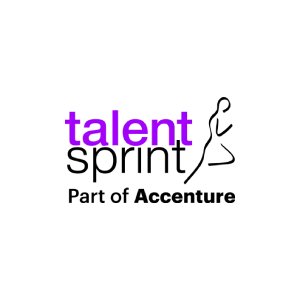10 Core Characteristics of Organizational Behaviour

Every successful organization shares one powerful secret, it understands its people. The study of organizational behaviour uncovers what drives individuals and teams to perform, cooperate, and grow. Its defining characteristics reveal that success in the workplace is not just about strategies or technology, but about understanding human nature. These features combine science with empathy, structure with flexibility, and performance with purpose.
By exploring the key characteristics of organizational behaviour, we discover how organizations can build stronger cultures, inspire engagement, and achieve lasting success through their people.
Also Read: What is organizational Behaviour?
10 Characteristics of Organizational Behaviour
1. Multidisciplinary Foundation
Organizational behaviour is grounded in several fields such as psychology, sociology, anthropology, and economics. Each discipline contributes valuable insights into understanding human attitudes, motivation, communication, and culture in the workplace, creating a broad and well-rounded foundation for studying people at work.
2. Structured and Systematic Approach
The study of organizational behaviour follows a scientific and methodical process rather than relying on assumptions. Through research, observation, and analysis, it develops evidence-based theories and practices that help leaders and employees better understand and manage workplace dynamics.
3. Focus Across Organizational Levels
Behaviour within organizations is examined from multiple perspectives: the individual level, the group level, and the structural or organizational level. This comprehensive approach allows for a deeper understanding of how personal traits, team interactions, and organizational systems influence one another.
4. Performance-Driven Perspective
A key purpose of studying workplace behaviour is to improve organizational effectiveness. By identifying the factors that drive motivation, teamwork, and leadership, organizations can design strategies that enhance productivity, innovation, and overall performance.
5. Human-Centered Orientation
This characteristic emphasizes the importance of valuing employees as individuals. It promotes respect for human dignity, job satisfaction, and personal development while balancing the organization’s pursuit of efficiency and success.
6. Adaptive Contingency Approach
There is no universal formula for managing people effectively. Organizational behaviour recognizes that the best approach depends on situational variables such as culture, leadership style, and task complexity, encouraging flexibility and adaptation.
7. Goal-Focused Thinking
Behavioral strategies within organizations are aligned with overall goals and objectives. This ensures that individual efforts and group performance contribute meaningfully to the achievement of organizational success.
8. Proactive Change Management
Understanding behaviour helps organizations navigate change more effectively. By preparing employees for transitions and addressing resistance, organizations can maintain stability and adaptability in dynamic business environments.
9. Ethical and Responsible Outlook
Ethical conduct and social responsibility are central to healthy workplace behaviour. Promoting integrity, fairness, and accountability fosters trust among employees and strengthens the organization’s reputation.
10. Interdisciplinary Integration
Organizational behaviour brings together knowledge from various academic fields to provide a deeper understanding of workplace dynamics. This integration of perspectives makes it a flexible and evolving discipline capable of addressing modern organizational challenges.
Why These Characteristics Matter?
Understanding these characteristics is crucial because they directly impact how employees feel and perform at work. When organizations apply principles of human behavior, they foster stronger engagement, improve retention, and boost overall performance.
A structured, people-centered approach promotes open communication, collaboration, and trust key elements that keep employees motivated and loyal.
Take Google, for example. It's renowned for its strong organizational culture. By using behavioral insights, Google has created a workplace that values autonomy, teamwork, and personal development. Initiatives like flexible work options, employee recognition programs, and a focus on psychological safety help keep its workforce engaged and innovative. As a result, Google consistently ranks among the world’s top employers and enjoys lower turnover rates than the industry average.
This example highlights how embracing core organizational behavior traits like adaptability, ethical practices, and a people-first mindset can transform a company into a high-performing, thriving organization. When employees feel supported and valued, they’re more likely to stay, contribute meaningfully, and drive long-term success.
Conclusion
Understanding the ten core characteristics that define organizational behaviour is essential for creating workplaces where people and performances thrive together. These traits, rooted in psychology, collaboration, ethics, and adaptability, show that success begins with understanding human behaviour. Companies that embrace these principles build stronger cultures, retain top talent, and stay resilient in changing environments.
For aspiring professionals, mastering these ideas is more than theory it’s a foundation for effective leadership. That’s why most business management courses, especially general management courses include a comprehensive organizational behaviour module, ensuring students gain the skills to inspire teams and drive real-world organizational success.

TalentSprint
TalentSprint is a leading deep-tech education company. It partners with esteemed academic institutions and global corporations to offer advanced learning programs in deep-tech, management, and emerging technologies. Known for its high-impact programs co-created with think tanks and experts, TalentSprint blends academic expertise with practical industry experience.



